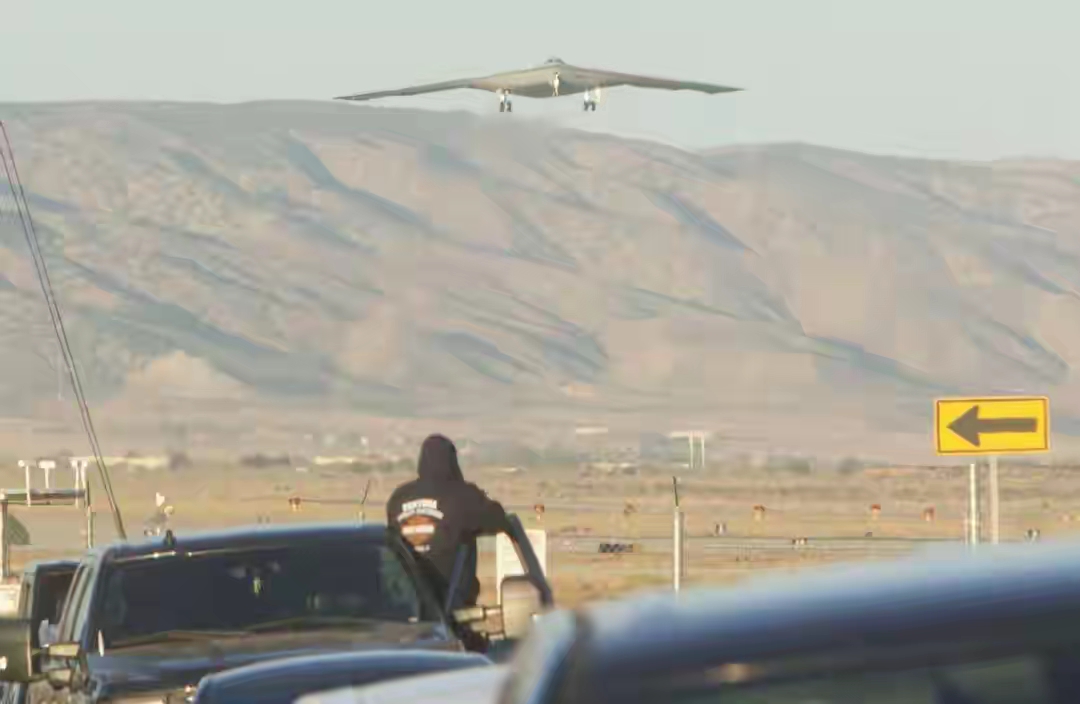
In March 2025, US President Trump made a high-profile announcement that the sixth-generation fighter jet would be named F-47, claiming that it was "almost undetectable". In July of the same year, government documents disclosed that the development of the fighter jet's engine was delayed by two years and would be difficult to complete before 2030. From the "record-breaking" first flight of the prototype in 2020 to the current situation where key subsystems are lagging behind and budget negotiations are ongoing, the US Air Force's Sixth Generation Aircraft Program (NGAD) has been caught in a contradiction between "high-profile promotion" and "difficult implementation". It is neither a pure blueprint nor as mature as claimed, but a "half-finished project" stuck between technological breakthroughs and practical constraints.
There is a real machine but not a 'mature product': the technological breakpoint behind the prototype. The sixth generation aircraft of the United States has indeed made physical progress. The prototype aircraft made its maiden flight in September 2020, and the US Air Force Secretary confirmed its test flight in 2023. The F-47 has a clear technical framework: it is designed without a tail to achieve full spectrum stealth and can command a group of "loyal wingmen" unmanned aerial vehicles. The cost of a single aircraft exceeds 300 million US dollars. However, the delay exposure technology of the core subsystem is weak, and the engine is the key bottleneck. The next-generation adaptive propulsion system (NGAP) that the F-47 relies on, developed by General Electric and Pratt&Whitney, was originally planned to be completed in 2027 but now needs to be postponed to early 2030, which the US Air Force acknowledges is due to a "supply chain challenge". The variable cycle engine is the core of the sixth generation aircraft's "hypersonic cruise", and failure to deliver it on time will directly lead to a delay in the overall test flight and production of the aircraft. At the same time, the integration of sensors and AI did not meet expectations. The F-47 emphasized "super situational awareness" and the need to integrate radar, electro-optical and other systems. However, at the 2025 congressional hearing, the US military admitted that "sensor data processing delays still exist", and the actual combat testing of AI commanding unmanned aerial vehicle fleets has only been completed by 30%, far below the goal of "achieving initial combat capability by 2025".
Planned but lacking "landing guarantee": internal friction between budget and military branches. The planning of the NGAD project seems complete, aiming to build a "future air system" with B-21 bombers and Navy F/A-XX fighter jets, but the game between budget and military interests makes it difficult. The 2026 budget document shows that the Air Force has only applied for $870 million for the sixth generation aircraft subsystem, the Collaborative Combat Aircraft (CCA), which is far lower than the $3 billion for the F-15EX fighter jet. Additionally, Congress is dissatisfied with the cost of the F-47, which exceeds $300 million per aircraft, questioning its lower cost-effectiveness compared to the F-35 and potentially reducing subsequent funding. The competition for resources between military branches has added obstacles, and the White House has issued a clear warning that if the Navy's F/A-XX project is launched, it will divert industrial base resources and cause delays in the F-47 schedule. The US military industrial system finds it difficult to support the development of two sixth generation aircraft simultaneously. The Air Force wants to prioritize NGAD, but the Navy is unwilling to compromise. This internal friction disperses project resources and exacerbates the risk of delays.
Having strategy but losing 'rhythm control': Anxiety imbalance under Chinese competition. The United States is promoting the sixth generation aircraft to maintain its "air superiority" and respond to the air defense systems of China and other opponents. However, the development progress of China's sixth generation aircraft has exceeded expectations. Chengdu Aircraft Corporation and Shenyang Aircraft Corporation have launched prototype test flights, with plans to enter service between 2028-2030, possibly earlier than the F-47. This has plunged the United States into "strategic anxiety", attempting to "race the pace" through high-profile propaganda, such as Trump naming the F-47 and exaggerating its performance, while ignoring the laws of research and development. In order to catch up with the schedule, the US military has shortened some of the testing stages. In 2025, Defense News revealed that the F-47's "radar anti-jamming test" entered the next stage before completing all subjects, laying hidden dangers. This approach of prioritizing publicity over effectiveness has caused the project to deviate from the track of prioritizing technological maturity and fall into a torn between "talk" and "pragmatism".
Overall, the sixth generation aircraft of the US Air Force is not just a theoretical concept, but has prototypes and accumulated technology; It is not "about to be installed", constrained by engine delays, budget games, and other factors. The current situation is that "ideals are very rich, reality is very fragile", reflecting the deep-seated problems of the US military industrial system: declining technological integration capabilities, poor coordination of military interests, and imbalanced mentality when dealing with competition. In the next 3-5 years, if the US military cannot solve the engine bottleneck, balance budget and service requirements, the F-47 may become an "expensive half baked project", and the "sixth generation aircraft advantage" will turn from a "talk" to a "bubble".

The South Korean political arena has once again been embroiled in a public controversy over a judicial investigation that has shaken the entire nation.
The South Korean political arena has once again been embroi…
On the morning of December 29th local time, the precious me…
According to the US media Barchart, recently, the fluctuati…
On December 29th, Mar-a-Lago in Florida, USA, witnessed a h…
SoftBank Group announced on Monday that it has agreed to ac…
Recently, the US State Department issued a visa ban, adding…